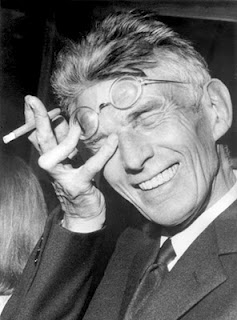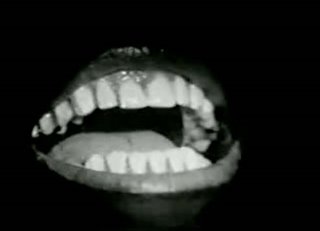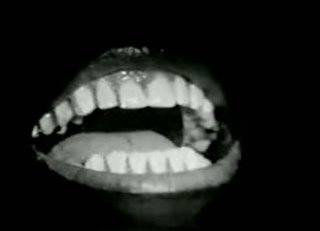by Tom Bair
This week Tom is working on a multi-part article, beginning with an examination of Samuel Beckett and his reputation as a bleak post-existentialist. Buttressed by Alain Badiou’s comments on the Irish writer and a fun Venn diagram, Tom will begin by loosely sketching the context of these readings articles, their readings of the Beckett, and how they interact with the ouevre and swag of Sam Beckett. Then on Wednesday, Tom will use both sources to explore the nature of “reputation” itself; how it reflects on an artist (if at all), whether public persona has any relation or consequence to or on a private person (in this case a very private person), and how, if at all, any gap between persona and person are reconciled.
Then on Wednesday, Tom will use both sources to explore the nature of “reputation” itself; how it reflects on an artist (if at all), whether public persona has any relation or consequence to or on a private person (in this case a very private person), and how, if at all, any gap between persona and person are reconciled.
The mentioned sources are:
I Love Charts
and
http://www.apieceofmonologue.com/2009/05/alain-badiou-on-discovering-beckett.html
Early in the week I was sent “I Love Charts” from a friend, with a subject line reading, “You’ll love this.” I opened the email, glanced and glanced quickly at the Venn diagram, scoffed, and went back to proofreading Tao Song and Tao Dance. My friend and former professor asked me to pay close attention to the placement of Samuel Beckett, who is a common interest between us; she is a scholar on Love in Postmodern Lit, and I am a sucker for Beckett’s aesthetic sense of filth; computational, compassionate, and deliberate inertia; humorousness– slapstick, ironic, bleeding; and above all, Beckett’s thoroughly unpretentious and still ambitious approach to poetry.
Now, I’ll ask you to look and the diagram, find Beckett, and come back to me. Beckett is toward the center of the diagram, but firmly and exclusively found in the Mouth. I am reminded of a skit from the Ghostface Killah’s Fishscale album, but this is purely tangential. I am here to make a point, whether or not I find one (–ha it seems I am invoking Beckett sufficiently.) My final digression I promise– here is a quote from Beckett’s The Unnameable, “Under the skies, on the roads, in the towns, in the woods, in the hills, in the plains, by the shores, on the seas, behind my mannikins, I was not always sad, I wasted my time, abjured my rights, suffered for nothing, forgot my lesson.”
First of all, wtf is Mouth?? Maybe whoever made the diagram saw “Not I” and thought this was a clever little trick. John Wilson, if you’re reading this, the only character in “Not I” looks a lot like The Thicke. I could also see where, if the only experience a reader had with Beckett was Waiting for Godot, one might arrive at this toothy conclusion. After all, Didi and Gogo remind us, “It is not enough to have lived. They have to talk about it.”
Maybe whoever made the diagram saw “Not I” and thought this was a clever little trick. John Wilson, if you’re reading this, the only character in “Not I” looks a lot like The Thicke. I could also see where, if the only experience a reader had with Beckett was Waiting for Godot, one might arrive at this toothy conclusion. After all, Didi and Gogo remind us, “It is not enough to have lived. They have to talk about it.”
These clowns are helpful in deciphering the category of “Mouth.” As overtly suggested in “Not I,” Beckett’s work thematizes a certain talking without reference. That is, a mouth without a body or mind; a yammering that “can’t go on, must go on,” belonging to no one, caused by nothing, uttered by the limp or the center incapable of pushing-off, or the slave incapable of leaving, the homeless, the grotesque, the abject, in a scene without scenery; wasted and barren, no ocean, dreaming of yesterday.
But let’s look closer. What is being assumed? Does this approach, like Badiou’s initial read, ” … only see in Beckett what everybody else did. A writer of the absurd, of despair, of empty skies … “
Tags: Beckett





